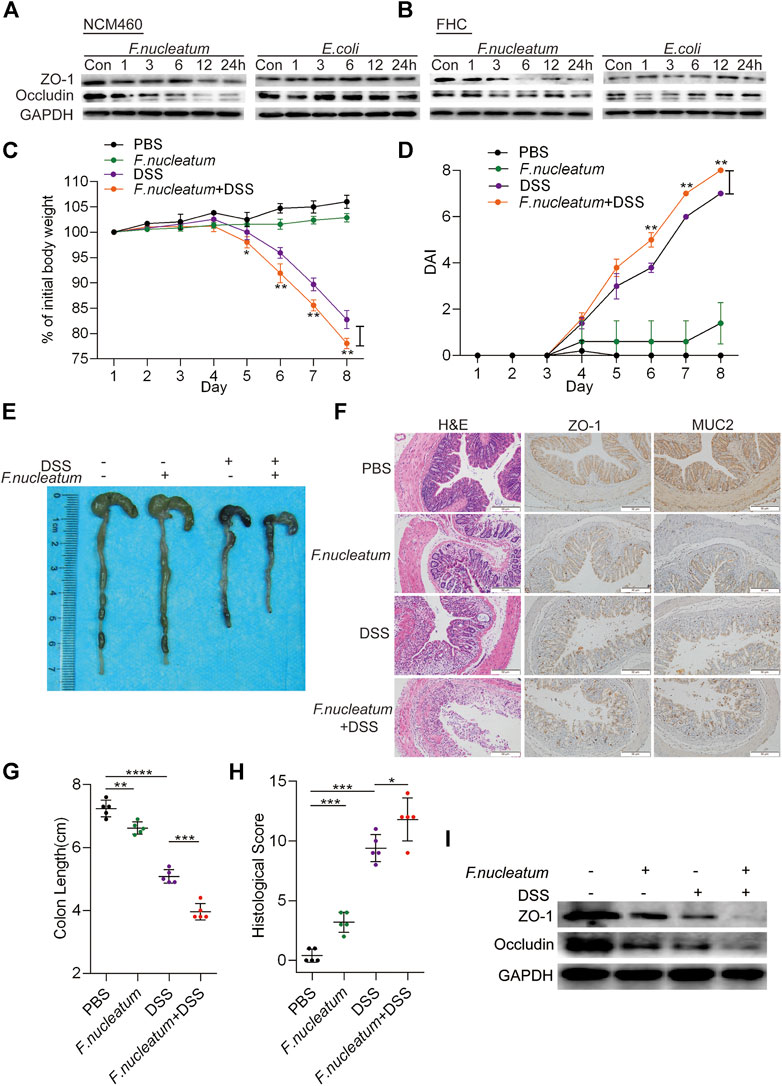
94% of researchers rate our articles as excellent or good
Learn more about the work of our research integrity team to safeguard the quality of each article we publish.
Find out more
CORRECTION article
Front. Pharmacol. , 19 May 2021
Sec. Inflammation Pharmacology
Volume 12 - 2021 | https://doi.org/10.3389/fphar.2021.672387
This article is a correction to:
Fusobacterium nucleatum Activates Endoplasmic Reticulum Stress to Promote Crohn’s Disease Development via the Upregulation of CARD3 Expression
A corrigendum on
Fusobacterium nucleatum Activates Endoplasmic Reticulum Stress to Promote Crohn’s Disease Development via the Upregulation of CARD3 Expression
by Cao, P., Chen, Y., Chen, Y., Su, W., Zhan, N., and Dong, W. (2020). Front. Pharmacol. 11:106. doi: 10.3389/fphar.2020.00106
Xufeng Guo was not included as an author in the published article. The corrected Author Contributions Statement appears below.
In the original article, there was a mistake in Figure 2F as published. The carelessness in combining the images caused the repetition of the images. The corrected Figure 2 appears below.

FIGURE 2. Fusobacterium nucleatum destroys epithelial barrier function in vitro and in vivo. (A,B) Western blotting was performed to measure the expression of ZO-1 and occludin in NCM460 cells (A) and FHC cells (B) cocultured with F. nucleatum, Escherichia coli, or phosphate-buffered solution (PBS) (Control, Con). (C,D) Mice (n = 5 per group) were administered F. nucleatum or PBS for 2 weeks and treated with 3% dextran sulfate sodium (DSS) for 7 days. Colitis induction was evaluated by body weight loss (C) and the disease activity index (DAI) (D). (*p < 0.05, **p < 0.01, and ***p < 0.001; one-way ANOVA combined with Bonferroni’s post hoc test; the error bars indicate the SDs). (E–G) Representative colon morphology and length in the mice are shown in panel (E) and quantified in panel (G). The sections used for HE, MUC2, and ZO1 staining were from the same mouse in the same group and three sections of the same tissue were stained separately. Representative images of histological analyses are shown in panel (F) and quantified in panel (H). Representative images of MUC2 and ZO-1 expression are shown in panel (F) (*p < 0.05, **p < 0.01, and ***p < 0.001; unpaired Student’s t test; the error bars indicate the SDs; 200× magnification). (I) Western blotting was performed to measure ZO-1 and occludin expression in mouse tissues.
Furthermore, a brief description was added to the annotations in Figure 2, indicating that these are serial sections from the same animal. The corrected Figure legend appears below.
Study conception and design: WD, PC, YC; Specimen provision: NZ, XG; Acquisition of clinical data: PC, YC, YC, XG; Data analysis and interpretation and statistical analysis: PC, YC, YC, XG; Animal experiments: PC, YC, YC, WS, XG; Manuscript drafting: PC, YC, WD.
The authors apologize for this error and state that this does not change the scientific conclusions of the article in any way. The original article has been updated.
Keywords: F nucleatum, intestinal mucosal barrier, endoplasmic reticulum stress, Crohn’s disease, gene regulation
Citation: Cao P, Chen Y, Guo X, Chen Y, Su W, Zhan N and Dong W (2021) Corrigendum: Fusobacterium nucleatum Activates Endoplasmic Reticulum Stress to Promote Crohn’s Disease Development via the Upregulation of CARD3 Expression. Front. Pharmacol. 12:672387. doi: 10.3389/fphar.2021.672387
Received: 25 February 2021; Accepted: 07 May 2021;
Published: 19 May 2021.
Edited and reviewed by:
Julian Aurelio Marschner, Hospital of the University of Munich, GermanyCopyright © 2021 Cao, Chen, Guo, Chen, Su, Zhan and Dong. This is an open-access article distributed under the terms of the Creative Commons Attribution License (CC BY). The use, distribution or reproduction in other forums is permitted, provided the original author(s) and the copyright owner(s) are credited and that the original publication in this journal is cited, in accordance with accepted academic practice. No use, distribution or reproduction is permitted which does not comply with these terms.
*Correspondence: Weiguo Dong, ZG9uZ3dlaWd1b0B3aHUuZWR1LmNu
Disclaimer: All claims expressed in this article are solely those of the authors and do not necessarily represent those of their affiliated organizations, or those of the publisher, the editors and the reviewers. Any product that may be evaluated in this article or claim that may be made by its manufacturer is not guaranteed or endorsed by the publisher.
Research integrity at Frontiers

Learn more about the work of our research integrity team to safeguard the quality of each article we publish.